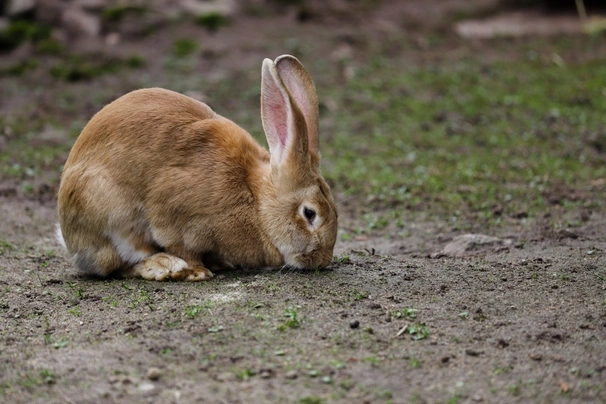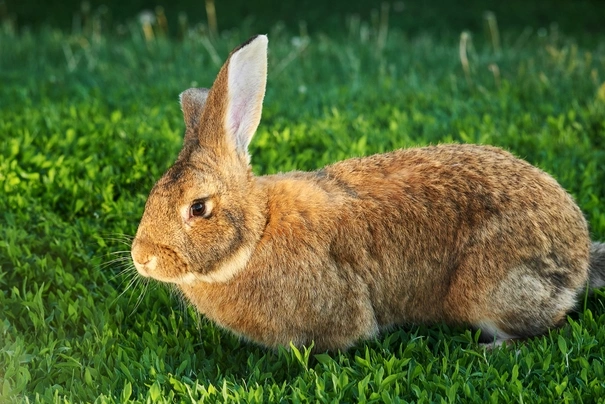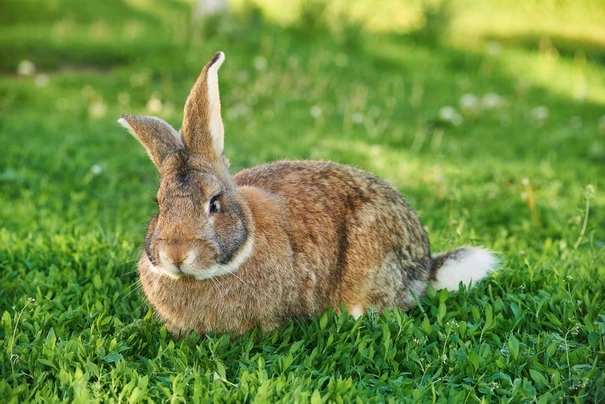Pets
Pets for studWanted petsBreedersAccessories & services
Knowledge hub
Support
Support & safety portalFlemish
Introduction of the Flemish
Originating in Flanders, the Flemish is a giant breed of rabbit that’s often kept as a house rabbit due to its large size – mature does can reach up to 14lbs, while bucks can achieve 13lbs. The Flemish is believed to have been bred from lines of meat and fur animals in the 16th Century so the Flemish Giant is certainly one of the oldest rabbit breeds that’s still kept and shown today.
History of the Flemish
Descendants of the Flemish Giant are thought to include the old Belgian Stone Rabbit and the sadly extinct European Patagonian. It’s important not to confuse this Patagonian ancestor with the Patagonian Rabbit of Argentina or the Patagonian Hare – an animal that’s actually a member of the cavy family which cannot interbreed with rabbits at all. In his famous work ‘The Origins of the Flemish Giants’, Thomas Coatoam states that the earliest authentic records of Flemish Giants appeared in the 1860s although the animal was developed much earlier.
Following these early written records, the first standard for the Flemish was written in 1893 after it was imported into the rest of Europe, the UK and America to increase the size of the meat rabbits there. Although the Flemish is a forerunner to very popular types such as the Belgian Hare, it didn’t gain a dedicated following until the second decade of the 20th Century when it began to appear at livestock shows across the US.
These days the Flemish is definitely a popular breed because of its unusually large size and variety of colours. It’s often referred to as the ‘universal rabbit’ thanks to its large number of uses as a pet, show, meat and fur animal, however thanks to its docile nature, it’s kept first and foremost as a companion.
Appearance of the Flemish
- Main colourways: white, blue, fawn, black, steel grey, light grey and sandy
- Average weight: 5.9 – 6.4kg
This is one of the world’s largest rabbits and is of the ‘semi-arch’ type. This means its back forms an arch from its shoulders down towards the base of its tail. The body is what’s commonly known as a ‘mandolin’ shape. The Flemish is a huge rabbit that’s immensely strong, with very powerful back legs and while the bucks have large heads, the females have a big and very pronounced dewlap, which is the fold of skin between the chin and the chest.
The coat of the Flemish is incredibly thick and shiny and will ‘spring’ back to its original position if stroked from back to front. They are accepted in a number of different colours including steel grey, sandy, black and white and although most examples weight between 13-14lbs, there have been rabbits weight over 20lbs and the largest examples can reach up to 50lbs, although these would technically be known as German or Continental Giants.
Temperament of the Flemish
Even though the Flemish Giant is quite laid back and tolerant of human company (they must be desensitised to the presence of people from an early age), the Flemish is an animal that must be handled with respect and is therefore not suitable for young or inexperienced handlers.
They must always be handled correctly as they carry a lot of weight and spinal injuries can occur if they’re not adequately supported. If they feel vulnerable or unsafe they can panic and become aggressive or violent. This is a very strong rabbit and if he struggles to free himself from an uncomfortable hold, he is likely to injure himself and his owner. However, if you take the time to understand how to handle this large rabbit and get him used to human activity and companionship, he will be relaxed and friendly with people.
Health of the Flemish
Because of their sheer weight, Flemish Giants can be prone to sore hocks so they must not be housed anywhere with a bare wire floor. If their hutch or cage does have a wire floor the rabbit must be provided with a resting board and plenty of deep bedding.
As already mentioned, handling of your Flemish must be done very carefully as his very weight can cause spine alignment problems if he isn’t supported properly while being carried.
The teeth of all rodents grow continually so your pet should be monitored closely for any dental problems. Overgrown molars or enamel spurs can injure the mouth and make eating difficult. Overgrown teeth can even interfere with sinus function so he may appear to have the snuffles. Feeding a rabbit plenty of roughage and checking his teeth regularly will help avoid problems with his teeth.
As well as being treated regularly for fleas, ticks and worms, he should also be vaccinated against the highly infectious Viral Haemorrhagic Disease and myxomatosis which can be passed on by wild rabbits. Female rabbits that will not be used for breeding should also be spayed to prevent uterine cancer. Unfortunately rabbits are prone to this distressing illness.
Caring for the Flemish
Experts recommend that if you are giving a home to one of the giant breeds of rabbit and if he’s to be hutch-kept, his living accommodation should have floor space of no less than five square feet so he can move about freely.
His hutch should have a solid floor and be completely weather and waterproof. He should be given a deep bed of shavings and straw and he can also be provided with logs and cardboard tubes to chew and play in and around. His living quarters should be cleaned out regularly and he should be given plenty of access to the outdoors (or indoors!) where he can indulge his love of play and exploration. Or so he can have a snooze in the sunshine or warm.
If he’s going to be a house rabbit he can be taught to use a litter tray and he must be provided with a secure area where he can get away from people and other pets so he can relax and sleep undisturbed. A large dog crate is perfect.
He must be fed a high-fibre diet combining plenty of high-quality hay, good rabbit pellets and lots of fibrous green vegetables like cabbage, kale and dandelions. Not only will this keep his gut working nicely, it will also help keep his teeth worn down.
He should have access to clean, fresh drinking water at all times and he will also appreciate some toys. Noisy ones intended for smaller dogs are particular favourites!
Related adverts
See all
WE HAVE THE WORLDS BIGGEST BUNNIES
£250

Worlds biggest bunnies
£250


